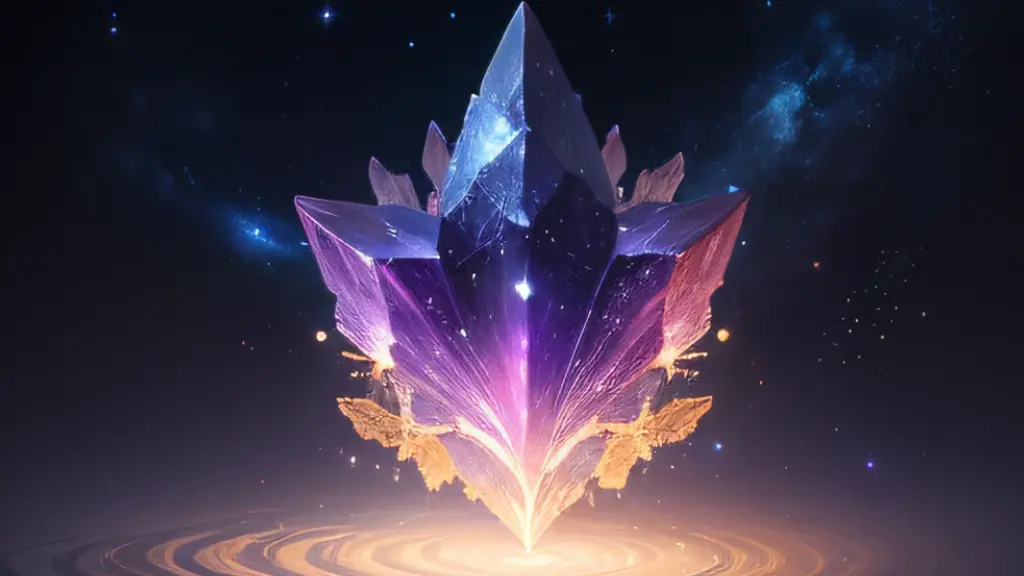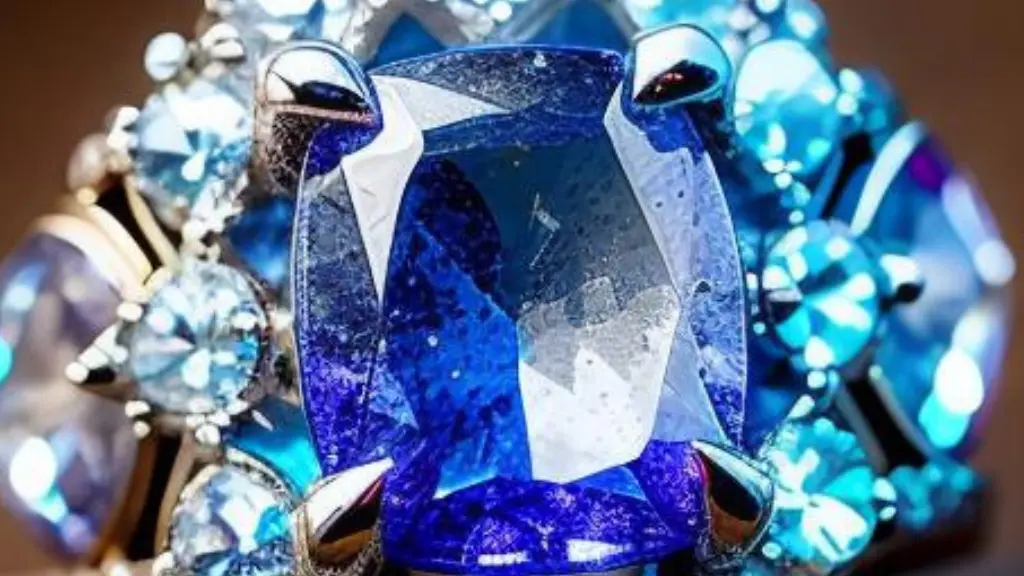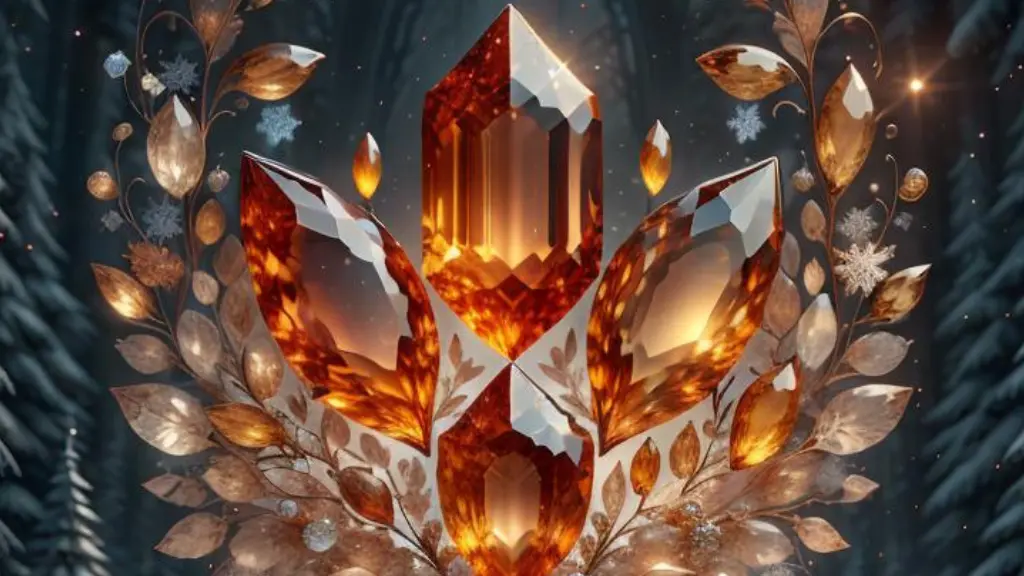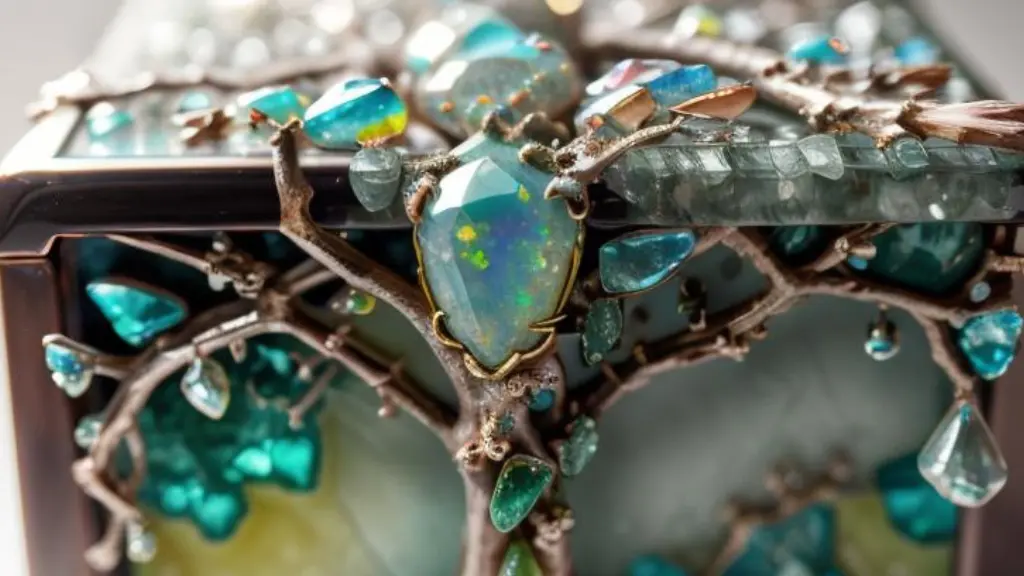
Raw emerald is a fascinating gemstone that has been prized for its beauty and rarity for centuries. As a gemstone, emerald is known for its vivid green color and its durability, making it an ideal choice for jewelry. However, many people are not aware of the unique properties of raw emerald, which is the uncut and unpolished form of the gemstone.
Raw emerald is a natural mineral that is formed deep within the earth’s crust. It is typically found in igneous and metamorphic rock formations, and is often associated with other minerals such as quartz and feldspar. Unlike cut and polished emerald, raw emerald has a rough, unrefined appearance that showcases its natural beauty and character.
One of the most interesting things about raw emerald is its history and cultural significance. Throughout history, emerald has been associated with royalty, wealth, and power. It has been used in jewelry, religious artifacts, and even as a form of currency. Today, raw emerald is still highly valued for its rarity and beauty, and is often used in high-end jewelry and decorative objects.
Formation of Raw Emeralds For Sale

As a gemstone, raw emerald is highly valued for its beautiful green color and rarity. However, the formation of raw emeralds is a complex and fascinating process that requires specific geological conditions.
Geological Processes
Raw emeralds are formed through a process called hydrothermal activity. This process involves the movement of hot water and minerals through rocks and other geological formations. The hot water dissolves minerals and carries them to new locations, where they can crystallize into new forms.
In the case of raw emeralds, the necessary conditions for hydrothermal activity include high temperatures and pressures, as well as the presence of certain minerals such as beryllium, aluminum, and chromium. These conditions are typically found in areas where tectonic plates are colliding or where magma is rising to the surface.
Primary Sources
The most well-known sources of raw emerald are Colombia and Brazil. Colombian raw emerald is known for its deep green color and high quality, while Brazilian emerald raw is typically lighter in color and less expensive.
Other sources of raw emerald include Zambia, Zimbabwe, and Madagascar. Each of these locations has unique geological conditions that contribute to the formation of raw emeralds with distinct characteristics.
In general, raw emeralds are found in veins or pockets within host rocks such as schist or granite. These rocks are typically found in mountainous regions, where the necessary geological processes have occurred over millions of years.
Overall, the formation of raw emeralds is a complex and fascinating process that requires specific geological conditions. By understanding these conditions and sources, we can better appreciate the beauty and rarity of this precious gemstone.
Characteristics of Raw Emerald
Physical Properties

Raw emeralds are a variety of the mineral beryl and are known for their green color. They have a hardness of 7.5 to 8 on the Mohs scale, making them quite durable. Raw emerald stone can be found in various shapes, including hexagonal prisms, flat plates, and tabular crystals. They are often found in combination with other minerals like mica, quartz, and feldspar.
The crystal structure of raw emeralds is hexagonal, which means they have six sides and six angles. They have a vitreous luster, which means they reflect light like glass. Raw emerald stones can range in size from small pebbles to large boulders.
Color Variations
Raw emeralds are most commonly known for their green color, which is caused by the presence of chromium and vanadium in the crystal structure. However, the exact shade of green can vary depending on the location where the stone was mined. For example, emeralds from Colombia are known for their deep green color, while those from Zambia tend to be lighter in color.
In addition to green, raw emeralds can also have other color variations. Some stones have a bluish-green tint, while others have a yellowish-green or brownish-green color. These variations are caused by the presence of other minerals in the crystal structure.
Overall, raw emeralds are a unique and beautiful gemstone that have been prized for centuries. Their physical properties and color variations make them a fascinating subject for gemstone enthusiasts and collectors alike.
Mining and Extraction
Mining Techniques

Mining raw emerald requires specialized techniques due to the unique geological formation of emerald deposits. The most common method of extraction is through open-pit mining, where the earth is removed to reveal the emerald-bearing rock. This method is cost-effective and efficient, as it allows for large quantities of emeralds to be extracted at once.
Another technique used in mining raw emerald is underground mining. This method is used when the emerald deposits are located deep within the earth’s surface. The process involves creating tunnels and shafts to access the emerald-bearing rock. While underground mining is more expensive and time-consuming, it allows for selective extraction of high-quality emeralds.
Major Mining Locations
Emeralds are found in various locations around the world, with the majority of production coming from South America. Colombia is the largest producer of emeralds, accounting for approximately 70% of the world’s supply. Other significant producers include Brazil, Zambia, and Zimbabwe.
In Colombia, the most significant emerald mining area is the Muzo mine. The mine is known for producing high-quality emeralds with rich color and exceptional clarity. Brazil’s major emerald mining area is the Carnaiba mine, which produces emeralds with a unique green color.
In Zambia, the Kagem mine is the largest emerald mine in the world and is known for producing large, high-quality emeralds. In Zimbabwe, the Sandawana mine is a significant producer of emeralds with a distinctive bluish-green color.
In conclusion, mining raw emerald requires specialized techniques, and the majority of production comes from South America, particularly Colombia. Open-pit mining is the most common method of extraction, while underground mining is used for selective extraction of high-quality emeralds.
The Global Market of Raw Emeralds
Trade and Export

As a precious gemstone, raw emerald has a significant place in the global market. The demand for raw emerald is high due to its rarity and beauty. The countries that produce the most raw emeralds are Colombia, Zambia, Brazil, and Madagascar. These countries are responsible for exporting raw emeralds to other parts of the world.
The trade of raw emeralds involves both legal and illegal activities. Illegal mining and smuggling of raw emeralds are major issues in the industry. To combat this, many countries have implemented regulations and laws to control the trade of raw emeralds. It is important to ensure that the raw emeralds being purchased are ethically sourced and legally obtained.
Price Determinants
The price of raw emeralds varies based on several factors. The first factor is the quality of the emerald. The higher the quality, the higher the price. The color, clarity, and size of the raw emerald all play a role in determining its value.
Another factor that affects the price of raw emeralds is the market demand. When the demand for raw emeralds is high, the price increases. Conversely, when the demand is low, the price decreases.
The location of the raw emerald mine also affects the price. The cost of mining and transportation can impact the price of the raw emerald. In addition, the political and economic stability of the country can also affect the price of raw emeralds.
In conclusion, the global market for raw emeralds is complex and involves various factors that determine its price and trade. It is important to be knowledgeable about the industry and ensure that the raw emeralds being purchased are ethically sourced and legally obtained.
Evaluation and Grading
Grading Systems

When evaluating raw emerald, several factors are taken into account. The key elements are color, clarity, cut, and carat weight. These are used to determine the overall quality of the emerald.
The Gemological Institute of America (GIA) has established a grading system that is widely used in the industry. This system grades emeralds on a scale from A to F, with A being the highest quality and F being the lowest. The grading system takes into account the aforementioned factors and assigns a grade based on the overall quality of the emerald.
Certification
It is important to note that certification is essential when purchasing raw emerald. A reputable gemological laboratory should certify the emerald. The certification should include details on the quality and characteristics of the emerald, including its origin.
The GIA is a well-known and respected laboratory that provides certification for emeralds. Other reputable laboratories include the American Gemological Laboratories (AGL) and the European Gemological Laboratory (EGL).
In conclusion, when purchasing raw emerald, it is important to consider the grading system and certification. This ensures that you are getting a high-quality emerald that is genuine and has been evaluated by a reputable laboratory.
Cutting and Polishing
Techniques

As a gemstone, raw emerald is known for its green color and natural beauty. However, the rough stone must be cut and polished to bring out its full potential. The process of cutting and polishing emerald is a delicate one, requiring skill and patience.
The first step in cutting an emerald is to examine the rough emerald and determine the best way to cut it. This involves looking for the natural cleavage planes in the stone and deciding where to make the cuts. Once the cuts have been made, the stone is shaped using a series of grinding wheels with increasingly finer grits.
Polishing an emerald is a process that requires great care and attention to detail. The stone is polished using a series of diamond-coated wheels, each with a finer grit than the last. The final stage of polishing involves using a special polishing compound to give the stone a high shine.
Finished Products
Once an emerald has been cut and polished, it can be used in a variety of jewelry designs. The most common use for emeralds is in rings, necklaces, and earrings. Emeralds are often paired with diamonds or other gemstones to create stunning pieces of jewelry.
Uncut emerald are also used in their natural form in some jewelry designs. These raw stones are often set in simple settings that allow the natural beauty of the stone to shine through.
Overall, cutting and polishing emeralds is a process that requires skill and patience. When done correctly, it can transform a rough stone into a stunning piece of jewelry that will be treasured for years to come.
Uses of Raw Emeralds

Emeralds are a precious gemstone that have been used for centuries in various applications. Here are some of the most common uses of raw emeralds:
Jewelry Making
One of the most popular uses of raw emeralds is in jewelry making. Emeralds are known for their beautiful green color, which makes them a popular choice for all kinds of jewelry, from rings and necklaces to earrings and bracelets. Raw emeralds can be cut and polished to create stunning gemstones that are perfect for use in jewelry.
In addition to their beauty, emeralds are also highly valued for their rarity. This makes them a popular choice for high-end jewelry pieces, where they can be used to add a touch of luxury and exclusivity.
Industrial Applications
Raw emeralds are also used in a variety of industrial applications. One of the most common uses is in the production of abrasives. Emeralds are extremely hard and durable, which makes them ideal for use in cutting and grinding tools.
Emeralds are also used in the electronics industry, where they are used to create high-quality insulators and conductors. In addition, emeralds are used in the production of lasers, which are used in a wide range of applications, from medical procedures to manufacturing processes.
Overall, raw emeralds are a versatile and valuable gemstone that have a wide range of uses. Whether you are a jeweler looking to create a stunning piece of jewelry or an industrial manufacturer looking for a durable and reliable material, raw emeralds are an excellent choice.
Caring for Raw Emeralds
As a gemstone with a hardness of 7.5 to 8 on the Mohs scale, raw emerald is a relatively durable stone. However, it still requires proper care and maintenance to ensure its longevity and beauty.
Maintenance
To keep your raw emerald looking its best, it’s important to clean it regularly. You can do this by gently wiping it with a soft, damp cloth to remove any dirt or debris that may have accumulated on its surface.
Avoid using harsh chemicals or ultrasonic cleaners on your raw emerald, as these can cause damage to the stone. Instead, opt for a mild detergent and warm water if you need to give it a more thorough cleaning.
If your raw emerald has become scratched or dull over time, you may want to consider having it professionally polished. This will help restore its natural shine and brilliance.
When it comes to storing your raw emerald, it’s important to keep it away from other hard objects that could scratch or damage it. You may want to consider storing it in a soft pouch or jewelry box to protect it from dust and other environmental factors.
Conclusion
By following these simple care and maintenance tips, you can help ensure that your raw emerald remains a stunning and valuable addition to your collection for years to come.

Avoid exposing your raw emerald to extreme temperatures or direct sunlight, as this can cause it to fade or become discolored over time. See also this related article: Pandora Bracelet April Birthstone: A Guide to the Perfect Gift.
Since 2015, Gustavo has been leaving an indelible mark on the digital landscape, leveraging his innate talent and unwavering commitment to produce high-quality articles for a diverse array of websites and portals.
Pingback: Blue Zircon Birthstone: Meaning, History, and Properties - Gem Pro Services